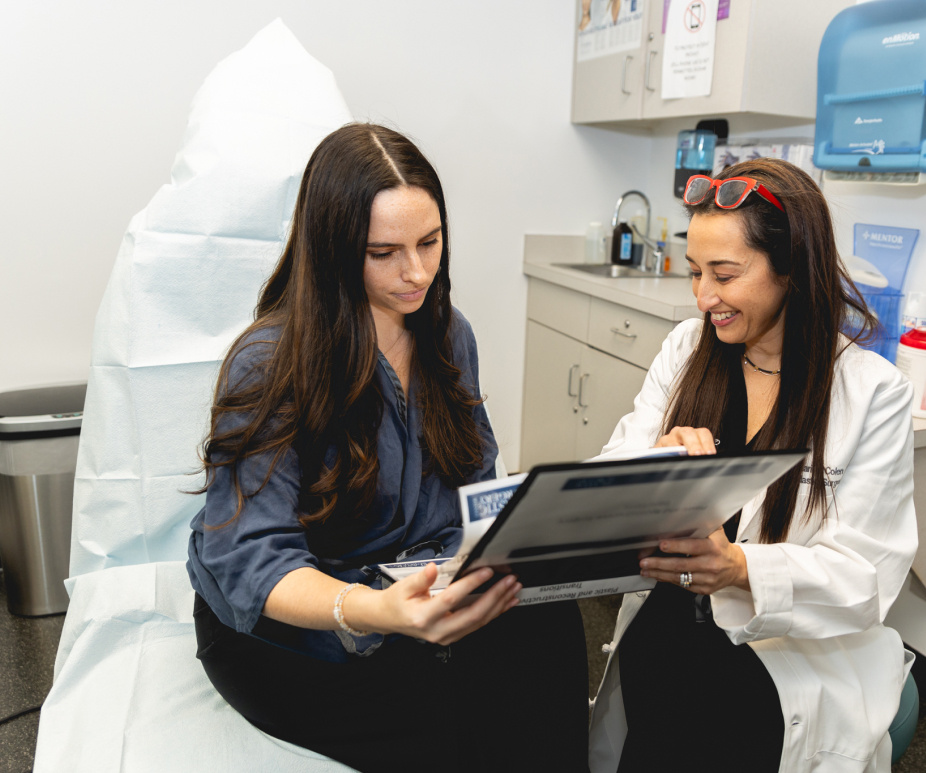Hamid Abdollahi
MD, FACS
Plastic & Reconstructive SurgeonDouble Board Certified in Plastic Surgery and Surgery
Oncoplastic surgery is a technique that combines breast-conserving surgery with plastic surgery techniques to optimize cosmetic outcomes for patients undergoing breast cancer treatment. The primary benefit of oncoplastic surgery is the ability to remove the tumor while preserving the natural appearance of the breast, which can have a positive impact on the patient's quality of life. Studies have shown oncoplastic surgery can achieve similar outcomes to traditional breast-conserving surgery, with a local recurrence rate of around 5-10% after 5-10 years.
Oncoplastic surgery offers significant advantages over other breast cancer treatment options, making it an appealing choice for many patients. By combining tumor removal with immediate breast reconstruction, oncoplastic techniques allow for breast conservation while achieving excellent cosmetic outcomes, which can have a profoundly positive impact on the patient's quality of life.
Key improvements and results patients can expect from oncoplastic surgery:

Patients are generally considered good candidates for oncoplastic surgery if they have early-stage breast cancer and sufficient breast tissue volume to allow for tumor removal and adequate breast reshaping. Factors that may disqualify a patient include large tumor size relative to breast size, multicentric tumors, and significant pre-existing breast deformities or asymmetry. Oncoplastic techniques are not typically recommended for patients who have previously undergone radiation therapy, as the additional surgery may be complicated by wound healing issues. Additionally, patients with advanced age, obesity, or significant medical comorbidities may be at higher risk for surgical complications and may not be ideal candidates. An experienced oncoplastic surgeon will carefully evaluate each patient's individual circumstances to determine if this approach is the best treatment option.
In the days leading up to oncoplastic surgery, the patient will meet with the surgical team to review the planned procedure in detail. They may undergo additional imaging tests, such as mammography, to precisely map the location and size of the tumor. The patient will also receive instructions on preparing for the surgery, including guidelines for discontinuing certain medications and fasting prior to the procedure.
Oncoplastic surgery is typically performed under general anesthesia, meaning the patient will be fully asleep and pain-free during the operation. The procedure begins with the breast surgeon removing the cancerous tumor along with a margin of healthy tissue around it. Plastic surgery techniques are then used to reshape and reconstruct the breast to restore a natural, symmetrical appearance. This may involve rearranging the remaining breast tissue, using tissue from other areas of the body, or even reducing the size of the opposite breast to achieve balance.
After the oncoplastic surgery is complete, the patient will be monitored in a recovery area as the anesthesia wears off. Temporary drainage tubes may be placed to help eliminate excess fluid, and the incisions will be covered with dressings. Pain medication will be provided to ensure the patient remains comfortable. Most patients are able to go home the same day, though they will need assistance with transportation and may require help with daily activities for the first few days of recovery.
The recovery process after oncoplastic breast surgery typically takes several weeks. Patients can expect some swelling, bruising, and discomfort in the treated breast area in the initial days following the procedure. Pain medication will be provided to help manage any discomfort.
Over the following weeks, the surgical site will begin to heal, and the swelling and bruising will gradually subside. Patients are typically able to return to light daily activities within 1-2 weeks but are advised to avoid strenuous exercise or heavy lifting for 4-6 weeks to allow the surgical area to fully heal. The plastic surgeon will closely monitor the patient's progress and provide guidance on when it is safe to resume normal physical activities. The final cosmetic result of the oncoplastic surgery may continue to evolve over several months as the breast tissue fully settles into its new shape. With proper care and patience during the recovery period, most patients are able to achieve an excellent aesthetic outcome that closely matches the appearance of the untreated breast.
Potential risks include bleeding, infection, delayed wound healing, changes in nipple/areola sensation, and rarely, issues with the cosmetic outcome. However, these complications are uncommon with an experienced oncoplastic surgeon. Most patients tolerate the procedure well.
For patients requiring radiation therapy, the oncoplastic procedure may need to be adjusted to ensure the surgical site can still be effectively targeted. Your care team will coordinate the timing and approach to optimize outcomes.
Most insurance plans, including Medicare, provide coverage for oncoplastic techniques when medically necessary for breast cancer treatment. However, the extent of coverage can vary, so it is important to check with your insurance provider.
